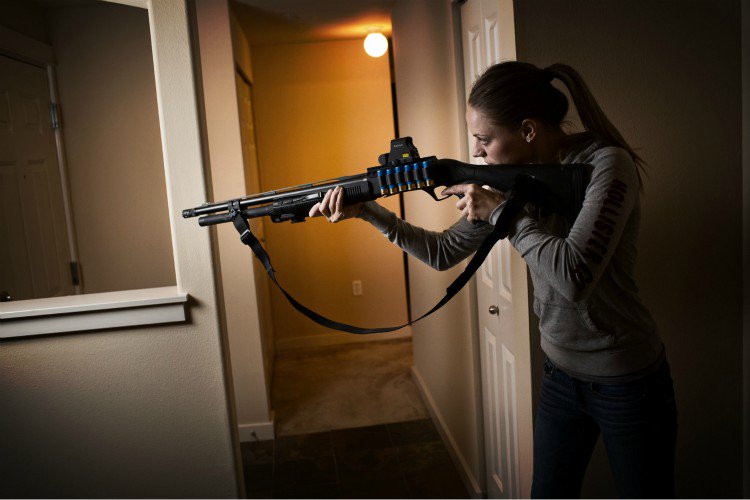By Magnus Eriksson
The intent with this column is to discuss general legal principles to make you aware of some commonly encountered realities and myths in regarding self-defense laws. Before we get any further: DO NOT FIRE WARNING SHOTS!!! You will be charged with (a) crime(s), potentially very serious ones. Here in Arizona, a gun friendly state, you will GO TO PRISON if convicted of the LEAST serious crime you will have committed by firing warning shots. It is called Disorderly Conduct with a Weapon, designated as a dangerous offense, which is committed simply by discharging a firearm within city limits. You could potentially be charged with Aggravated Assault (referred to as battery in many states) with a Deadly Weapon-a dangerous offense with a prison sentence to the tune of half a decade to a decade and a half to follow upon conviction. Not to mention attempted murder, which will land you in prison for couple of decades or more. I go to jails and prisons all the time to visit clients, but I am free to leave after the visit. Believe me, you do not want to spend any time in any jail, detention center or prison for following bad advise in good faith. Other states may treat warning shots somewhat differently, but I doubt that they are condoned anywhere in the US.
Secondly, please familiarize yourself with the self-defense and weapons laws in your state. The devil is in the details as it were and even a well intended mistake or misunderstanding could result in a living and legal nightmare. Here in Arizona, and I suspect in other states with similar requirements, perhaps the best way to learn the details of this part of the law is to take a Concealed Weapons class. These classes offer more detail on this area of the law than most law school curriculums. Of course, consulting an attorney familiar with the specific laws in your state is highly recommended.
Self-defense is an affirmative defense, meaning one admits to an action that normally would be a crime, but one did it out of necessity and therefore was justified in taking the otherwise illegal action. The reasoning would sound something like this; “Yes officer, I shot the person, because if I hadn’t, he would have killed or seriously injured me with the gun he pointed at me.” Generally, the law permits a victim of an attack to use “reasonable force” in order to protect herself by communicating the following general principles.
A victim of an attack, can use that amount of force, which a reasonable and prudent person would use, under the same circumstances up to and including deadly force in order to avoid imminent (serious) injury or death.
A person must be engaged in a lawful activity in order to be justified in the use of force. For instance, a person who is packaging heroin for sale on the street is not justified in using deadly force when “the wholesaler” of that heroin comes to steal the drugs back at gunpoint. Many jurisdictions allow force to be used in the defense of a third person under the same reasonableness standard. Here in Arizona, the law allows the use of deadly force in the defense of another who is being sexually assaulted; against an arsonist who is setting fire to an occupied structure, armed robbery, kidnapping, or any other scenario where the third party is threatened with imminent death or serious bodily injury.
Some states have a Retreat Requirement before self-defense can be successfully claimed. Usually, this requirement applies unless it is not practicable to accomplish. Keep in mind, some retreat requirement states require retreat if attacked, even in one’s own home. The opposite of the Retreat Requirement is the Stand Your Ground principle. Stand Your Ground laws simply get rid of any retreat requirement. In one recent highly publicized case in a large south-eastern state, much was said about this principle. Ironically, the principle was not invoked in that trial at all. Contrary to some claims, the SYG laws do not legalize murder. Remember the actions taken while using force must be reasonable. Murder is not reasonable.
In many states the so-called Castle doctrine is law. The Castle Doctrine presumes that ones’ home is ones’ castle and that if attacked there, there is no retreat requirement. In some states use of force in this scenario is presumed justified. Please, note that this doctrine does not cover inviting someone over and upon tiring of their presence the invitees may legally be murdered. That is not reasonable. The doctrine only applies if a person threatens you with imminent deadly force in your home. This doctrine extends to ones’ car in certain jurisdictions in cases of car jacking. At the risk of sounding flippant, this is not a license to murder people who walk by your car minding their own business and posing no imminent threat to you or anyone else in the car.
The Disparity of Force doctrine allows use of up to deadly force in cases such as a wheel chair bound victim attacked by someone not physically challenged, a group of people attacking one lone person, a weak and sickly victim attacked by a master Mixed Martial Arts master etc.
You may still think that all this is clear as mud! Not to worry, the whole concept is complex because it is highly dependent on all the specific facts of a situation. Unfortunately, politics to a greater or lesser degree is always a factor in who gets charged and why and strange things happen as a result sometimes. The best advice is to speak softly, carry a big stick be courteous and alert and aware of the surroundings. If you are attacked and can get away without fighting, do it even it the law doesn’t require it (tactically sound but perhaps philosophically un-American). If you can’t get away, fight to live and never quit!!! If you are then charged with a crime or sued wrongly, continue to fight and never give in.











